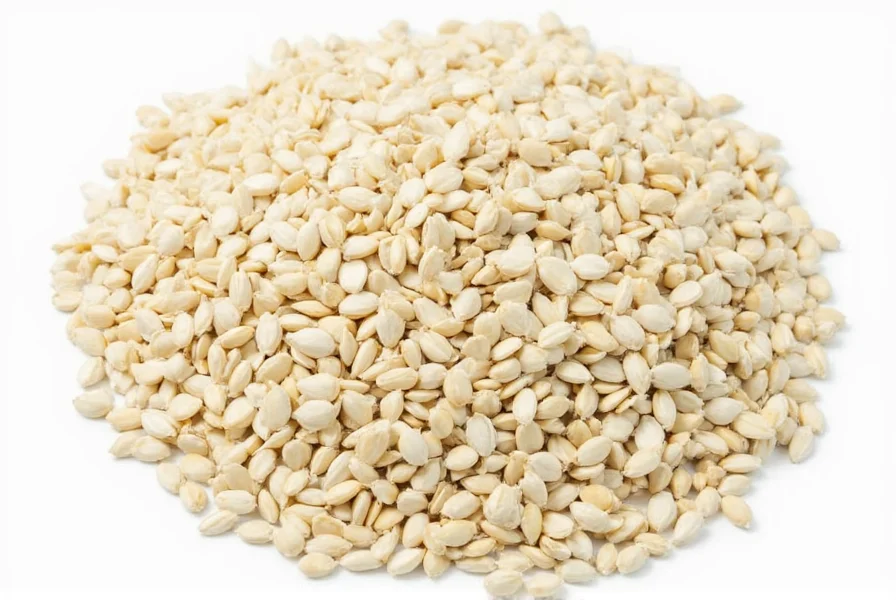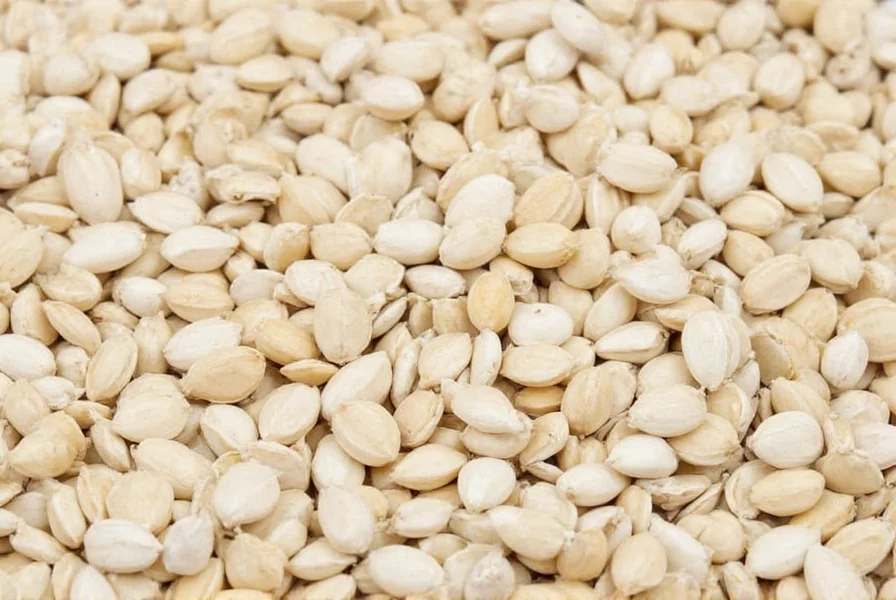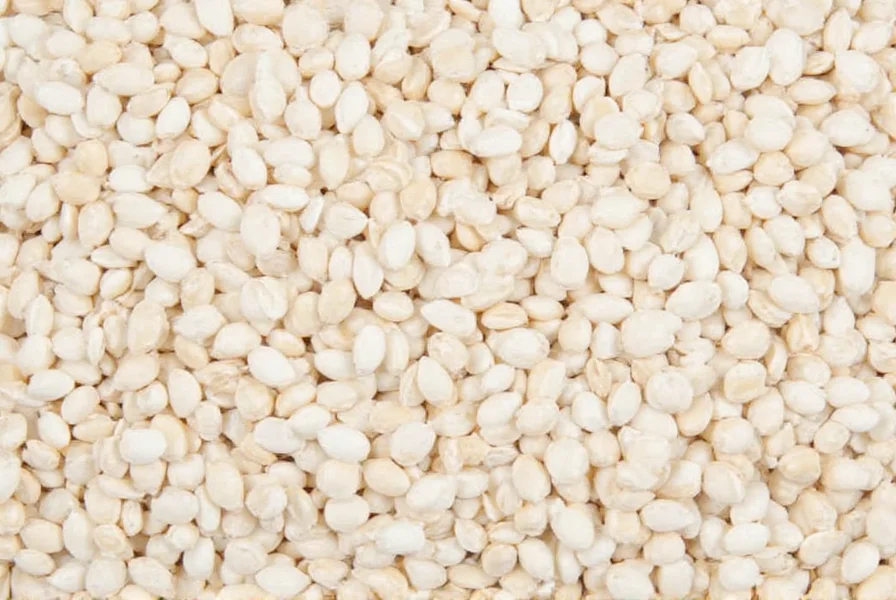When discussing white seed varieties in culinary and nutritional contexts, white sesame seeds represent the most prevalent interpretation. These tiny, ivory-colored seeds come from the Sesamum indicum plant and differ from black sesame seeds primarily through the removal of their dark outer hull during processing. This hull removal creates not only the characteristic pale appearance but also affects both flavor profile and certain nutritional properties.
Common Types of White Seeds
While white sesame seeds dominate the "white seed" category, several other seed varieties merit consideration:
- White sesame seeds - The most commercially available white seed, featuring a delicate nutty flavor
- Golden flaxseeds - Sometimes marketed as "white flaxseeds," though technically golden in hue
- White chia seeds - A less common variety of chia with similar nutritional profile to black chia
- Hulled pumpkin seeds (pepitas) - When hulled, these appear pale green to off-white
Nutritional Profile Comparison
Understanding the white sesame seeds nutrition facts compared to other varieties helps consumers make informed choices. The hull removal process affects certain nutrient concentrations:
| Nutrient (per 1oz/28g) | White Sesame Seeds | Black Sesame Seeds | White Chia Seeds |
|---|---|---|---|
| Calories | 160 | 160 | 140 |
| Fat | 14g | 14g | 9g |
| Calcium | 28% DV | 14% DV | 18% DV |
| Fiber | 3.3g | 3.5g | 10g |
| Iron | 14% DV | 20% DV | 12% DV |
Notice that while white sesame seeds contain more calcium due to the hull removal (which concentrates calcium content), they have slightly less fiber and iron than unhulled black sesame seeds. Both varieties provide excellent sources of healthy fats and plant-based protein.

Culinary Applications and Flavor Profiles
The difference between white and black sesame seeds extends beyond appearance to culinary functionality. White sesame seeds offer a milder, more delicate nutty flavor that works well in:
- Light-colored sauces and dressings where visual appeal matters
- Baking applications including breads, cookies, and pastries
- Japanese and Chinese cuisine for garnishes and toppings
- Tahini production (white sesame creates a lighter-colored paste)
- Confectionery items where darker seeds would be visually disruptive
Chefs often prefer white sesame seeds when creating dishes where the visual presentation requires a clean, pale appearance. The how to use white sesame seeds in cooking techniques include toasting them lightly in a dry pan until fragrant, which enhances their natural nuttiness without overwhelming other flavors in the dish.
Storage Recommendations for Maximum Freshness
Due to their high oil content, proper storage is essential for maintaining quality. Follow these white seed storage tips to preserve freshness:
- Store in airtight containers away from light and heat
- Refrigerate for short-term storage (up to 6 months)
- Freeze for long-term preservation (up to 1 year)
- Check regularly for rancidity (off smells indicate spoilage)
- Buy in smaller quantities if infrequently used to ensure freshness
Unlike some seeds, white sesame seeds don't require refrigeration if used within a month of purchase, but extended storage benefits significantly from cooler temperatures. The benefits of white chia seeds include greater stability at room temperature compared to sesame seeds, though refrigeration still extends their shelf life.

Identifying Quality White Seeds
When selecting white seeds, look for these quality indicators:
- Uniform color without dark spots or discoloration
- Dry texture without clumping or moisture
- Fresh, nutty aroma (rancid seeds smell sour or paint-like)
- Purchase from reputable sources with high turnover
- Check packaging dates when buying pre-packaged seeds
The where to buy high quality white seeds question often leads consumers to health food stores, specialty grocers, or reputable online retailers with transparent sourcing practices. Bulk bins can offer cost savings but require careful inspection for freshness and proper storage conditions at the store.
Common Misconceptions Clarified
Several myths surround white seeds that deserve clarification:
- Misconception: White seeds are nutritionally inferior to darker varieties
Reality: While nutrient profiles differ slightly, both offer substantial health benefits - Misconception: All white seeds are hulled
Reality: Some varieties like certain chia seeds are naturally lighter in color - Misconception: White sesame seeds are bleached
Reality: The white color comes from mechanical hulling, not chemical treatment
Practical Incorporation into Daily Diet
Adding white seeds to your diet requires minimal effort. Try these simple approaches:
- Sprinkle over salads for added crunch and nutrition
- Blend into smoothies for extra protein and healthy fats
- Mix into yogurt or oatmeal for breakfast enhancement
- Use as breading for fish or chicken
- Incorporate into homemade energy bars or bites
For those exploring the are white seeds healthy question, research indicates that regular consumption of sesame seeds, including white varieties, correlates with improved heart health markers and better blood sugar regulation when consumed as part of a balanced diet.











 浙公网安备
33010002000092号
浙公网安备
33010002000092号 浙B2-20120091-4
浙B2-20120091-4